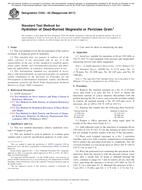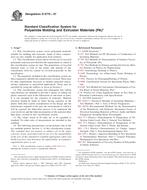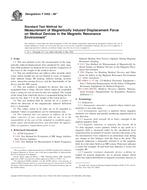1.1 This test method (1, 2, 3) is applicable to the determination of the following analytes in finished drinking water, drinking water during intermediate stages of treatment, and the raw source water:
Chemical Abstract Service Analyte Registry Number A Alachlor 5972-60-8 Aldrin 309-00-2 Chlordane 57-74-9 Dieldrin 60-57-1 Endrin 72-20-8 Heptachlor 76-44-8 Heptachlor Epoxide 1024-57-3 Hexachlorobenzene 118-74-1 Lindane 58-89-9 Methoxychlor 72-43-5 Toxaphene 8001-35-2 Aroclor B 1016 12674-11-2 Aroclor B 1221 11104-28-2 Aroclor B 1232 11141-16-5 Aroclor B 1242 53469-21-9 Aroclor B 1248 12672-29-6 Aroclor B 1254 11097-69-1 Aroclor B 1260 11096-82-5 A Numbering system of CAS Registry Services, P.O. Box 3343, Columbus, OH 43210-0334. B Aroclor is a registered trademark of Monsanto Co.
1.2 Detection limits for most test method analytes are less than 1 [mu]g/L. Actual detection limits are highly dependent on the characteristics of the sample matrix and the gas chromatography system. Table 1 contains the applicable concentration range for the precision and bias statements. Only Aroclor 1016 and 1254 were included in the interlaboratory test used to derive the precision and bias statements. Data for other PCB products are likely to be similar.
1.3 Chlordane, toxaphene, and Aroclor products (polychlorinated biphenyls) are multicomponent materials. Precision and bias statements reflect recovery of these materials dosed into water samples. The precision and bias statements may not apply to environmentally altered materials or to samples containing complex mixtures of polychlorinated biphenyls (PCBs) and organochlorine pesticides.
1.4 For compounds other than those listed in 1.1 or for other sample sources, the analyst must demonstrate the applicability of this test method by collecting precision and bias data on spiked samples (that is, groundwater, tap water) (4) and provide qualitative confirmation of results by gas chromatography/mass spectrometry (GC/MS) (5), or by GC analysis using dissimilar columns.
1.5 This test method is restricted to use by or under the supervision of analysts experienced in the use of GC and in the interpretation of gas chromatograms. Each analyst must demonstrate the ability to generate acceptable results using the procedure described in Section 13.
1.6 Analytes that are not separated chromatographically, that is, analytes that have very similar retention times, cannot be individually identified and measured in the same calibration mixture or water sample unless an alternative technique for identification and quantitation exists, (see 13.4).
1.7 When this test method is used to analyze unfamiliar samples for any or all of the analytes listed in 1.1, analyte identifications and concentrations should be confirmed by at least one additional technique.
1.8 The values stated in SI units are to be regarded as the standard. The inch-pound units given in parentheses are for information only.
1.9 This standard does not purport to address all of the safety problems, if any, associated with its use. It is the responsibility of the user of this standard to establish appropriate safety and health practices and determine the applicability of regulatory limitations prior to use. For specific hazard statements, see Section 9.
Product Details
- Published:
- 01/01/1996
- Number of Pages:
- 11
- File Size:
- 1 file , 150 KB


